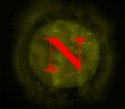skip to main |
skip to sidebar
Welcome to the NOVA-Antiques Blog
NOVA-Antiques is the Mid Atlantic website for all things antique and collectible. Our website features antique & collectibles dealers, shops & malls; Flea Market Directory & Reviews; Monthly Antiques Show Calendar; Estate & Tag Sales Page; and our NOVA-Antiques Newsletter, which contains news, articles and information about the antiques & collectibles market. NOVA-Antiques Blog is an extension of our Newsletters.
 Pocillovy is the act of collecting egg cups. An egg cup is a container used for serving boiled eggs. Although not much used in the United State, egg cups still remain popular at the breakfast tables in Europe. There are many types of egg cups, some are footies, which means they have a wide base, others are know as buckets, which do not have a pedestal. They can be made of many materials including wood, glass, plastic, porcelain or metals.
Pocillovy is the act of collecting egg cups. An egg cup is a container used for serving boiled eggs. Although not much used in the United State, egg cups still remain popular at the breakfast tables in Europe. There are many types of egg cups, some are footies, which means they have a wide base, others are know as buckets, which do not have a pedestal. They can be made of many materials including wood, glass, plastic, porcelain or metals.
The earliest images of egg cups appear in a Turkish mosaic dating to about 3AD and examples were found among the Pompeii ruins of 79AD. It wasn’t until the late 1800’s that egg cups were produced as individual pieces of dinnerware and in most cases, silver egg cups were gilded on the inside. These early examples of egg cups are very hard to come by because they were used as everyday dinnerware and often got chipped or broken. The Wabash egg cup pictured above sold on eBay for over $760.00.
NOVA-Antiques Newsletter Archive – August 24, 2006 . . . . .
 Hubley Manufacturing Company was incorporated by John Hubley in 1894 in Lancaster, Pennsylvania. The company is known for producing a large array of toys but their claim to fame were the wonderful cast iron toys that they made before World War II. After the war, the company changed to a cast iron alloy. Hubley made objects of many shapes and designs including beautiful horse drawn carriages, vehicles, toys, dogs and doorstops. The doorstops have recently been selling for record prices. A doorstop is an object that is used to hold a door open or closed. Sought after by folk art collectors, cast iron collectors, door stop collectors as well as other collectors and designers have made prices go through the roof.
Hubley Manufacturing Company was incorporated by John Hubley in 1894 in Lancaster, Pennsylvania. The company is known for producing a large array of toys but their claim to fame were the wonderful cast iron toys that they made before World War II. After the war, the company changed to a cast iron alloy. Hubley made objects of many shapes and designs including beautiful horse drawn carriages, vehicles, toys, dogs and doorstops. The doorstops have recently been selling for record prices. A doorstop is an object that is used to hold a door open or closed. Sought after by folk art collectors, cast iron collectors, door stop collectors as well as other collectors and designers have made prices go through the roof.
Although they became predominant in Victorian European home in the early 19th Century, it is widely believed that doorstops were first made in the 18th Century. In the beginning, doorstops were nothing more than any object you could find to keep a door open or closed including rocks, wood or any other thing that was heavy enough. It wasn’t until the Victorian Era brought a wave of decorated doorstops made to look more attractive than a rock. European foundries of the time made doorstops look like dogs and flowers. Doorstops did not become popular in the U.S. until the early 1920’s. Women of that era bought the doorstops to coordinate with other thing in their homes including bookends and shade pulls.
 Pocillovy is the act of collecting egg cups. An egg cup is a container used for serving boiled eggs. Although not much used in the United State, egg cups still remain popular at the breakfast tables in Europe. There are many types of egg cups, some are footies, which means they have a wide base, others are know as buckets, which do not have a pedestal. They can be made of many materials including wood, glass, plastic, porcelain or metals.
Pocillovy is the act of collecting egg cups. An egg cup is a container used for serving boiled eggs. Although not much used in the United State, egg cups still remain popular at the breakfast tables in Europe. There are many types of egg cups, some are footies, which means they have a wide base, others are know as buckets, which do not have a pedestal. They can be made of many materials including wood, glass, plastic, porcelain or metals.


